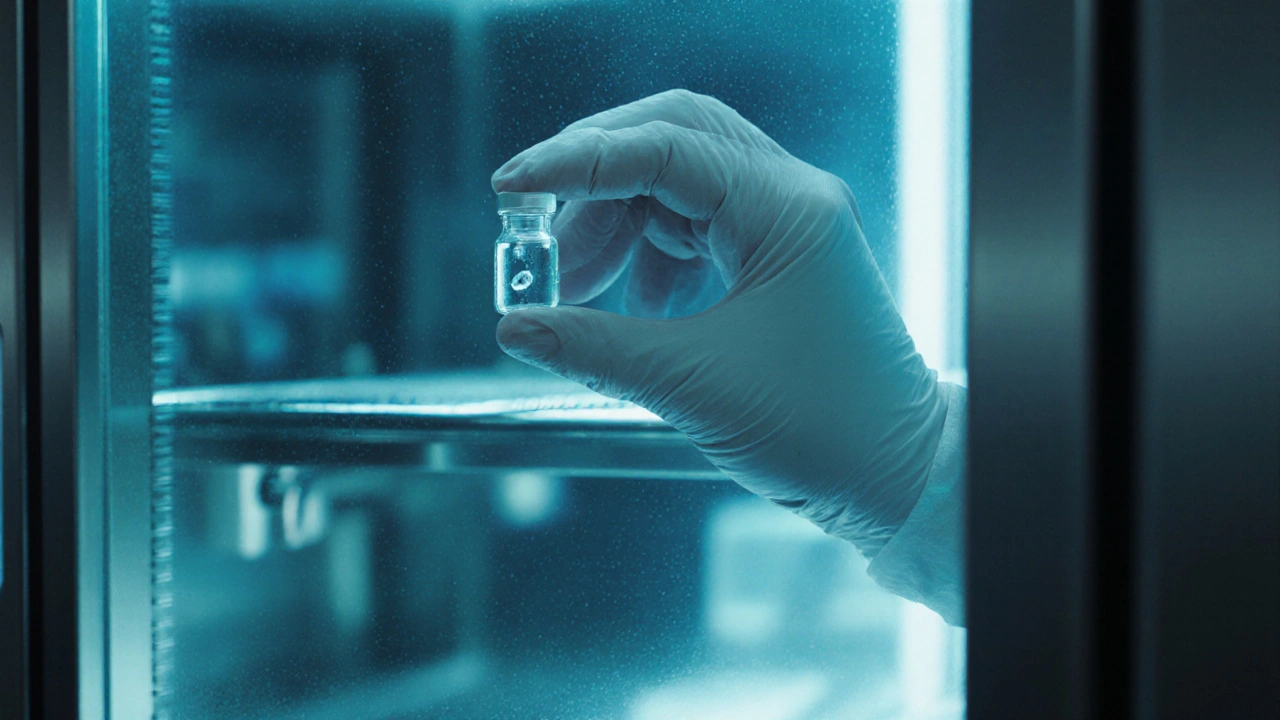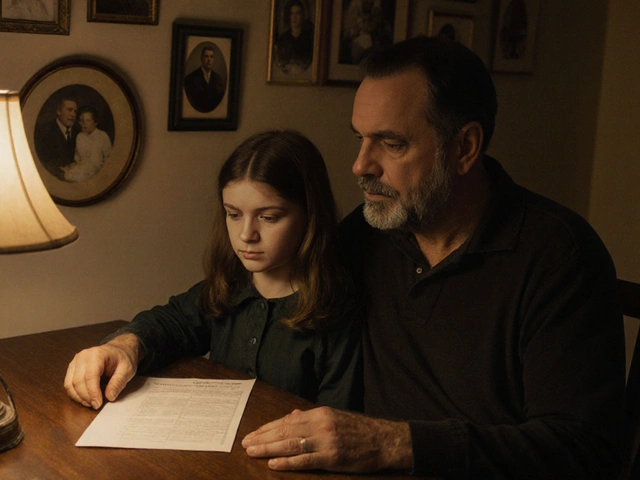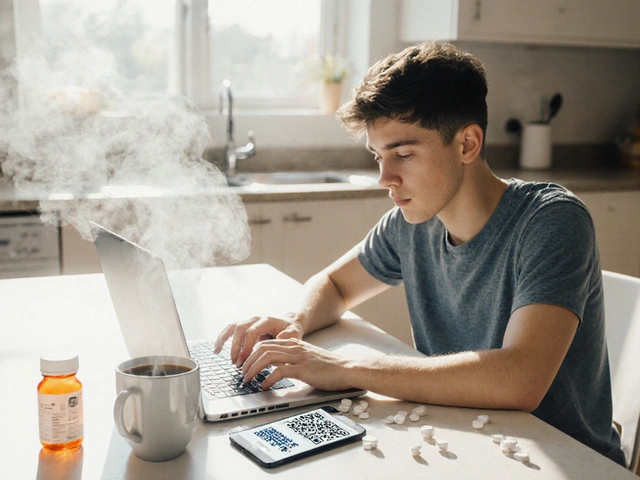Quick Takeaways
- Rhabdomyosarcoma treatment can damage ovaries and testes, but several preservation methods exist.
- Consult a fertility specialist before starting chemotherapy or radiation.
- Options include sperm banking, oocyte freezing, and ovarian or testicular tissue preservation.
- Long‑term follow‑up includes hormone monitoring and fertility assessment.
- Emotional support and clear communication with the care team are crucial.
Rhabdomyosarcoma is a rare soft‑tissue cancer that arises from skeletal muscle progenitors, most often diagnosed in children and adolescents. In the United States, roughly 350 new cases are reported each year, and survival rates have risen to about 70% for localized disease thanks to multimodal therapy.
While the primary focus is on eradicating the tumor, treatment‑related gonadal toxicity is a major concern for patients who hope to start families later. Understanding how each therapeutic modality influences fertility helps patients and families plan ahead.
How Treatment Affects Reproductive Health
Chemotherapy is a cornerstone of rhabdomyosarcoma management, typically using alkylating agents like cyclophosphamide. These drugs target rapidly dividing cells, which unfortunately includes the germ cells in the ovaries and testes. Studies show that cumulative doses above 7g/m² raise the risk of permanent infertility in males by 30%.
Radiation therapy delivers high‑energy beams to the tumor site. When the field includes the pelvic region, scattered doses can impair gonadal function. A 20Gy dose to the pelvis can reduce ovarian reserve by up to 50% and lead to azoospermia in 40% of young men.
The combined effect of chemotherapy and radiation is often termed gonadal toxicity, which may manifest as delayed puberty, menstrual irregularities, or reduced sperm count. Early detection through hormone panels (FSH, LH, estradiol, testosterone) is essential.
Fertility Preservation Options
When a diagnosis is made, time is limited, but several proven methods exist. The choice depends on age, gender, disease location, and personal preferences.
| Method | Success Rate (Live Birth) | Age Limit | Invasiveness | Typical Storage Duration |
|---|---|---|---|---|
| Sperm banking | 70‑80% | Post‑pubertal | Non‑invasive (ejaculation) | Indefinite |
| Oocyte cryopreservation | 50‑60% | ≥12years (mature ovaries) | Moderate (hormonal stimulation, retrieval) | Indefinite |
| Testicular tissue freezing | Experimental (no live births yet) | Pre‑pubertal | Invasive (surgical biopsy) | Indefinite |
| Ovarian tissue freezing | 30‑40% (live births reported) | Pre‑pubertal and post‑pubertal | Invasive (laparoscopic removal) | Indefinite |
For adolescent boys who have not yet produced sperm, testicular tissue freezing remains the only option, though it is still experimental. Female patients often opt for oocyte cryopreservation if they are post‑pubertal, while ovarian tissue freezing is a viable route for younger girls.
Decision‑Making Process
Choosing a preservation strategy involves a multidisciplinary team: pediatric oncologists, reproductive endocrinologists, surgeons, and psychosocial counselors. A typical workflow looks like this:
- Diagnosis confirmation and staging.
- Referral to a fertility specialist within 48hours.
- Baseline fertility assessment (hormone panel, ultrasound).
- Discussion of options, success rates, costs, and timing.
- Consent and scheduling of the chosen procedure before the first chemotherapy cycle.
Financial considerations are real. In many countries, insurance covers sperm banking, but egg or tissue freezing may require out‑of‑pocket payment. Some hospitals offer grant programs for pediatric patients; checking with local cancer support groups can uncover hidden resources.

Long‑Term Follow‑Up and Survivorship Care
After completing treatment, survivors enter a survivorship clinic where ongoing monitoring includes:
- Annual hormone level checks (FSH, LH, estradiol, testosterone).
- Pelvic or testicular ultrasound to assess organ integrity.
- Discussion of menstrual health for females and semen analysis for males.
- Referral to a fertility specialist if issues arise.
Some survivors experience premature ovarian insufficiency or low sperm count even when preservation was attempted. In those cases, hormone replacement therapy (HRT) can manage symptoms and maintain bone health, while assisted reproductive technologies (ART) like IVF remain options using previously stored gametes.
Emotional and Social Considerations
Talking about future families can feel overwhelming during a cancer battle. Kids may not grasp the concept of fertility, while parents might worry about “missing out” on grandchildren. Integrating a child psychologist or social worker into the care team helps normalize these conversations. Peer support groups-both in‑person and online-provide real stories: a 14‑year‑old who banked sperm before treatment, or a 16‑year‑old girl who froze ovarian tissue and later used it to have a healthy pregnancy.
Respecting cultural or religious beliefs is also vital. Some families decline certain procedures due to personal values; offering alternative paths, like adoption counseling, ensures they still feel supported.
Key Takeaways for Patients and Families
When facing rhabdomyosarcoma, the window to protect reproductive potential is narrow but not impossible. Prompt referral, clear communication, and individualized preservation plans give many young survivors a chance at future parenthood. Staying proactive with follow‑up care and emotional support rounds out a comprehensive survivorship strategy.
rhabdomyosarcoma fertility concerns are real, but the medical toolkit today offers multiple pathways to keep hope alive.
Frequently Asked Questions
Can I preserve fertility if my child is pre‑pubertal?
Yes. For boys, testicular tissue freezing is the only available method, though it remains experimental. For girls, ovarian tissue freezing can be performed safely and has resulted in live births after re‑implantation.
How long does it take to freeze sperm or eggs before starting chemotherapy?
Sperm banking can be completed in 1‑2 days; the patient provides a sample, which is then frozen. Oocyte cryopreservation requires hormonal stimulation, typically 10‑14 days, so it must be coordinated quickly after diagnosis.
Will my child’s future hormones be affected by the preservation procedures?
The procedures themselves are designed to preserve existing hormone function. However, the cancer treatment that follows is the main driver of hormonal changes. Regular endocrine follow‑up can catch and treat any imbalances early.
Is it possible to have a child using frozen tissue if it was stored for many years?
Yes. Cryopreserved gametes and tissue have been successfully stored for over a decade with no loss of viability. Long‑term storage facilities follow strict temperature controls to ensure safety.
What are the costs involved, and does insurance cover them?
Sperm banking is usually covered by health plans. Egg freezing and ovarian tissue freezing are often partially or fully out‑of‑pocket, though some pediatric oncology centers include them in clinical trial funding. It’s worth asking the hospital’s financial counselor about grants or charitable programs.
How do I talk to my teenager about fertility preservation without causing extra stress?
Start with honest, age‑appropriate facts. Emphasize that preservation is a proactive step, not a guarantee of future problems. Involve a counselor who can frame the conversation positively and answer questions in a non‑judgmental way.






Written by Martha Elena
I'm a pharmaceutical research writer focused on drug safety and pharmacology. I support formulary and pharmacovigilance teams with literature reviews and real‑world evidence analyses. In my off-hours, I write evidence-based articles on medication use, disease management, and dietary supplements. My goal is to turn complex research into clear, practical insights for everyday readers.
All posts: Martha Elena